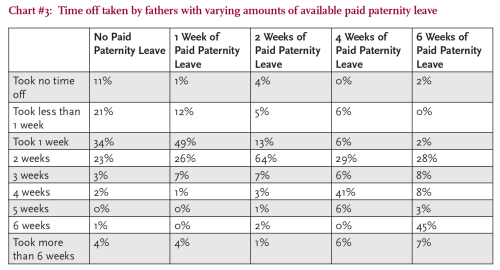Let’s Talk About Paternity Leave!
Perhaps it was the Father’s day celebrations that happened a few weeks back that sparked this week’s blog topic… a subject that stills seems rarely addressed: paternity leave, and workplace policies for new fathers. On the flip side, there are oodles of studies and piles of data on maternity leave and programs/policies for new mothers. While traditional social roles are still very influential and probably the biggest underlying factor for such discrepancies, at a time when working mothers are just as common as working fathers and gender equity is not something to strive for but a necessity in a great workplace, we owe it to ourselves to discuss paternity leave in the same light, and with the same vigor, as maternity leave. A 2014 study by the Boston College Center for Work and Family “THE NEW DAD: Take Your Leave” provides great perspectives on paternity policies at leading organizations, as well as an insightful global look at policies for fathers, incorporating interviews and surveys taken by ~3,000 dads.
When it comes to paid leave for time off directly following the birth of a child (for both women and men), the U.S is an outlier compared to nearly every other developed country in the world, offering no national policy on paid leave. In terms of paternity leave specifically, today there are 70 countries that offer paid leave in either the form of shared parental leave or paternity leave. It was perhaps most interesting to see father’s attitudes towards childcare and paternity leave. The vast majority of fathers surveyed rated their children as their top priority in life, more than 3 out of 4 fathers wished to spend more time with their children than they do presently, and more than 2 out of 3 fathers said caregiving should be a 50/50 proposition and wished to divide this evenly between spouses. When respondents were asked, in considering a new job, how important paid paternity/parental leave was in the U.S 89% indicated it was important, and more than half 60% indicated it was very important. The intensity of responses varied by generation, 93% of fathers from the millennial generation said paternity leave is extremely, very or somewhat important, Gen X fathers felt similar (slightly subdued at 88%) and Boomers felt least strongly (77%) – perhaps for obvious reasons.
The average amount of time off taken by fathers following the birth of a child is two weeks. Boston College’s study found, however, that there is a strong correlation between the supportiveness of the workplace culture and the number of weeks that fathers took off. The more encouraged new fathers were to spend time with their children, the more weeks they took off (on average). Whether leave was paid or unpaid was another big influencer on whether leave was taken. 86% of respondents said they would not make use of paternity leave or parental leave unless at least 70% of their salaries were paid, and 45% said compensation needed to be at 100%. When asked what the right amount of paternity leave/paternal leave should be in the U.S, 74% of fathers said 3-4 weeks.
The data clearly reflect the changing role of fathers and the expectation for men to be more involved with their children. Beyond this though, it may indicate that men have a strong desire to be more active parents, something organizations should encourage, for a number of reasons. More and more studies are acknowledging the importance of father/infant interaction. A recent paper in the Journal of Child Psychology and Psychiatry shows a correlation between behavioral disorders (the most common psychological problem affecting children) to disengaged interactions of fathers with their infants. A 2010 study cited in the Boston College report found that developing bonds with children at an early age improves the likelihood of a stronger relationship later in life. Additionally, global research has demonstrated benefits to families when fathers take paternity leave, including increased wellbeing for the new mothers. A recent study in the Journal of Business and Psychology Organizations found that men switch between four images of themselves as fathers: provider, role model, partner and nurturer and that depending on their work environment, one of these roles is always dominant. Men that work in an environment where they can talk about their children, for example, are more likely to be nurturers, whereas men who feel unable to discuss anything but breadwinning are likely to conform mostly to that role.
Organizations offering paternity leave are sending clear messages about work life integration and its values. While U.S. employers are not required by law to provide paid maternity or paternity leave, the positive impacts of these on building a culture of high trust are inescapable. As are the positive impacts on fathers, mothers and children. It gets increasingly difficult to argue against creating these kinds of policies.








